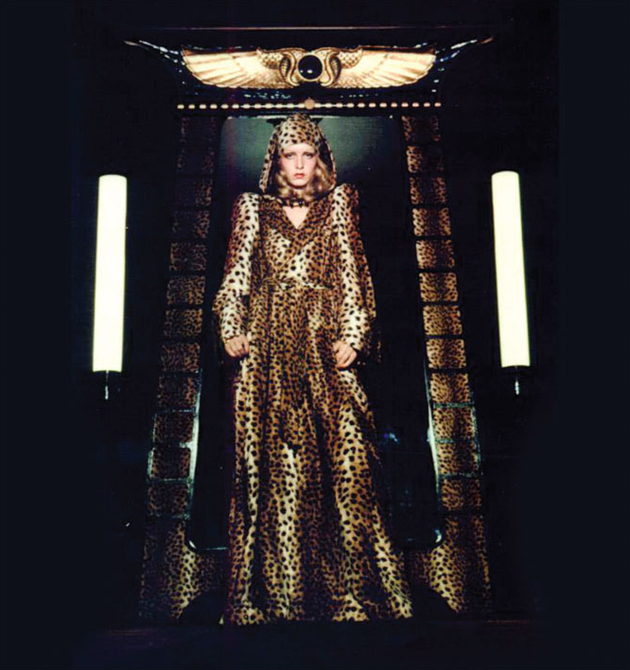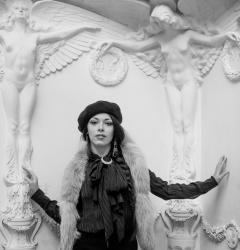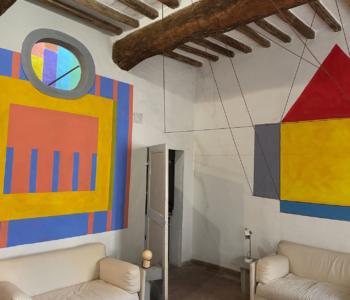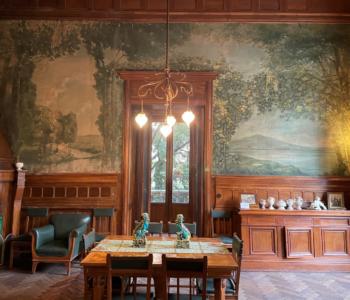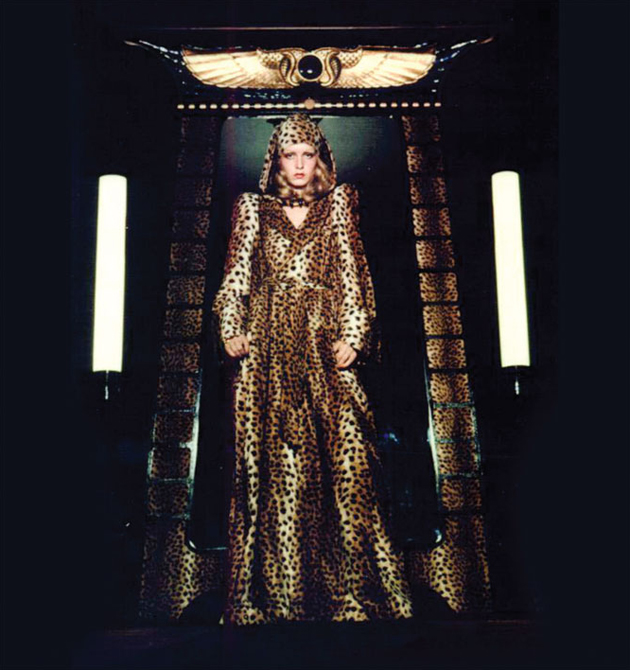
“I don’t like modern things. They’re cold.”
Barbara Hulanicki
The following pictures show a place that doesn’t exist anymore. It only existed for a few years in London and it was called Big Biba. What at first glance can appear as a lavish boudoir of some 20’s-30’s Hollywood diva, was actually a shop.
The Roots
BIBA was a London based clothing label created by Polish designer Barbara Hulanicki and his husband Stephen Fitz-Simon in 1963. It started as a small mail order business but quickly became a cult brand when in 1964, one of her dresses (a pink gingham number in the style of Brigitte Bardot), was featured in the Daily Mirror. Business boomed. The shop eventually became too small for the hordes of customers who often included celebrities such as fashion editor Molly Parkin, popstrels Sonny and Cher, actress Julie Christie and model Twiggy and in 1965 a new space was found, a former grocery on Kensington High Street (numbers 124-126).
The Decadent Nostalgia look
Biba was basically a clothing line for women such as many others but it became the most famous and soon became a mania. Why? The difference between Biba and others clothing labels was the concept: the whole success of this great empire depends on the taste and flair of one person. The idea is still essentially that of the small, individually run, highly personalized boutique. Everything was personally chosen and approved by Barbara Hulanicki whose tastes included a combination of retrophilia and decadent nostalgia, ranged from Art Nouveau, Art Deco, Victoriana and Hollywood glamour. It was the pointlessly beautiful, the non utilitarian sexiness of it. Entering in Biba store was like living in another era, coming back time, a separation from real life. The Biba style was characterized by its Art Deco gilded logo and included maxi coats, feather boa, dusky colors, velvet and satin gowns, art nouveau prints, platform shoes but I think that Biba style deserves another post.
Big Biba
Restless to expand their business, Hulanicki and Fitz-Simon found a much larger vacant building on Kensington High Street in 1971, formerly the Derry & Toms department store. What had started as a tiny boutique with one dress available in one size had, within a decade, become a fully fledged department store, with thousands of products bearing the official Biba stamp. Now Biba was a total lifestyle.
The new building was twenty times the size of the current shop and was called Big Biba. Whitmore and Thomas were the designers choosen to work on the new store and to expand the image of Biba. The main idea was Art Nouveau but they added a kitsch touch. The seven-department store was a theme park devoted to elegantly wasted decadence. This was designed to be, above all else, somewhere for people to live, not simply to shop.
The End
The fall and decay of Biba was due to several reasons: first of all a change in the managing group and of course the ruinous situation of economy in Britain didn’t help, but probably Biba would tumbled down the same. It was too difficult to last a dream for so long.
I find the story fascinating in itself, a story of how every idea of Beauty, even the more purest, is convicted to fail when it tries to go commercial, but above all I love the Biba aesthetic view and the pastiche of references used, the mixture of elegance ideas and kitsch actualization. Maybe is it impossible to recreate past eras avoiding bad taste? Anyway, enjoy these pictures, precious images of how that weird place may looked.
All the info and pictures are from the books “The Biba experience” by Alwyn Turner and from “Big Biba” by A. Turner and Steven Thomas (one of the Biba designer). Here an interesting interview to Barbara Hulanicki by Vice.
source: alwynwturner.com; bibacollection.co.uk

The ground floor was a grand, almost Hollywood environment that celebrated the Art-Decò nature of the building. It housed the record department, a Casbah area with North African and Middle Eastern products and also here were knitwear, tights and cosmetic.
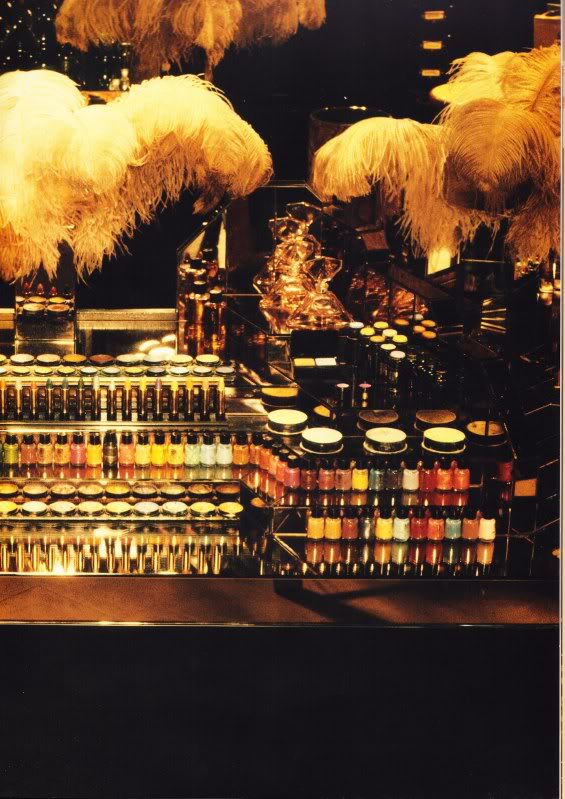
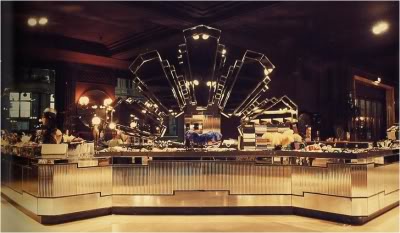
The cosmetics counter on the ground floor
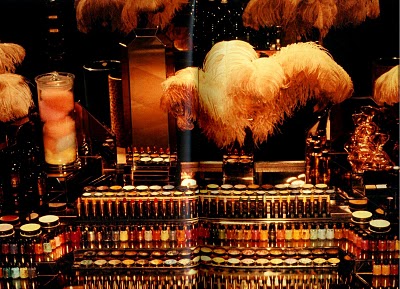
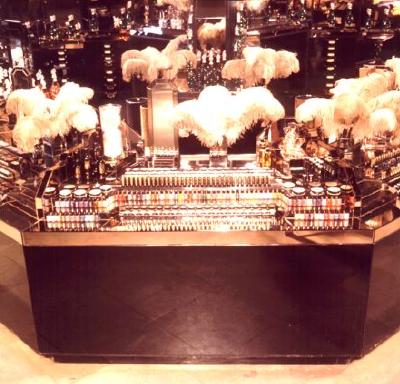


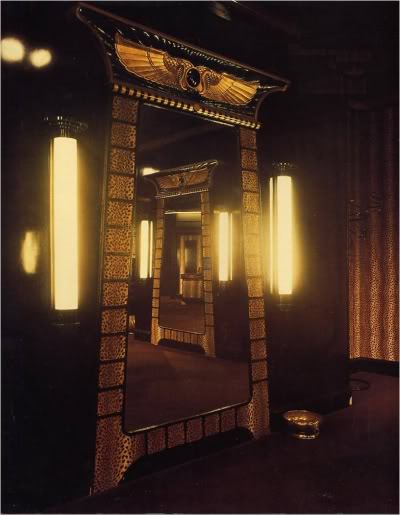 Part of the egyptian-themed changing room, an appropiate and timely reminder of the roots of Art Decò.
Part of the egyptian-themed changing room, an appropiate and timely reminder of the roots of Art Decò.
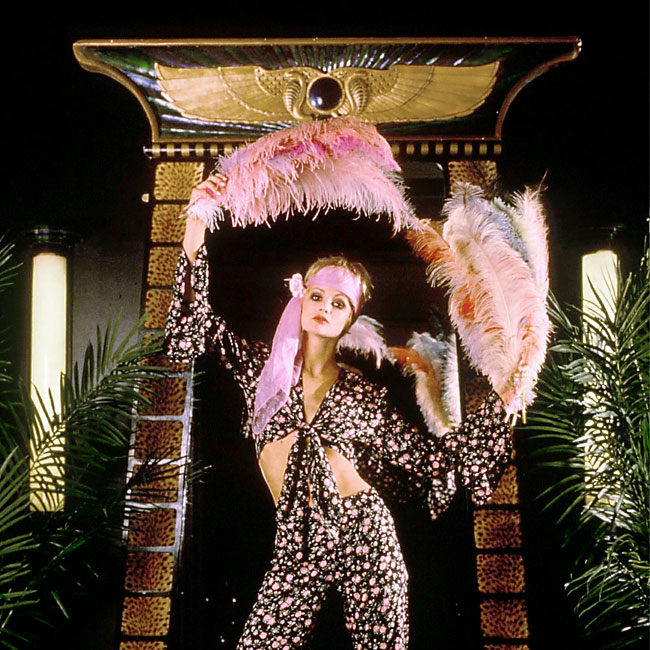 a model posing in the egyptian changhing room
a model posing in the egyptian changhing room
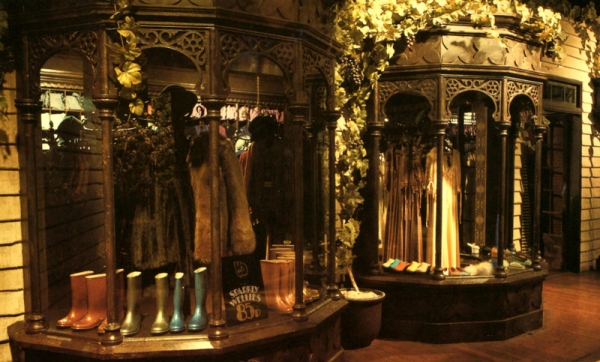
The Lolita section with the famous glitter wellington boots
The second floor contained the children’s department and a section for teengirls called Lolita.
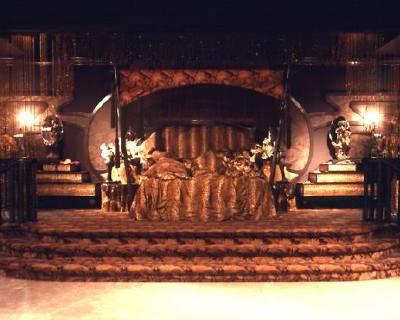
The third floor was the menswear department but it never had much success. There were also the Mistress Room that featured long satin gloves, naughty negligees, edible underwear and other pieces of ersatz erotica.
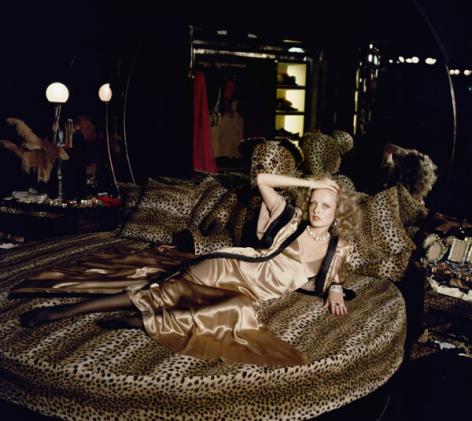 Twiggy in the Mistress Room
Twiggy in the Mistress Room
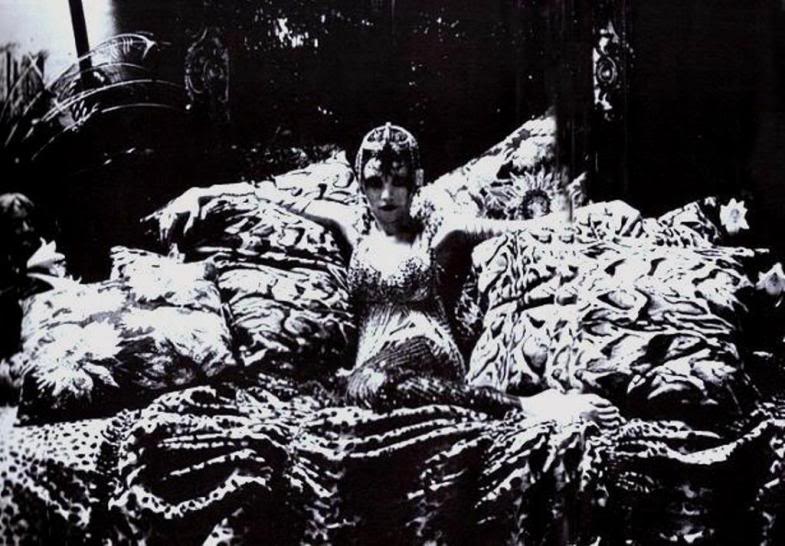
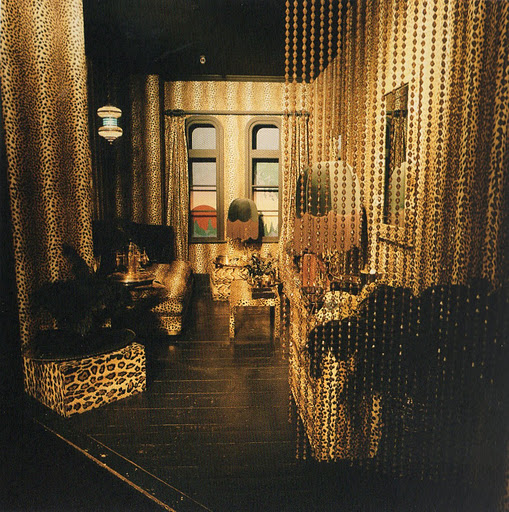
On the fourth floor, the household and interior decor department was organized in room-sets. Established favourities, particularly the Biba lampshades, were joined by a kitsch section offering such delights as frilled plastic boxes, ashtrays like mitiature loos, school-of-Tretchikoff paintings, nude plastic babes rising from plastic roses, urinating cupids etc…
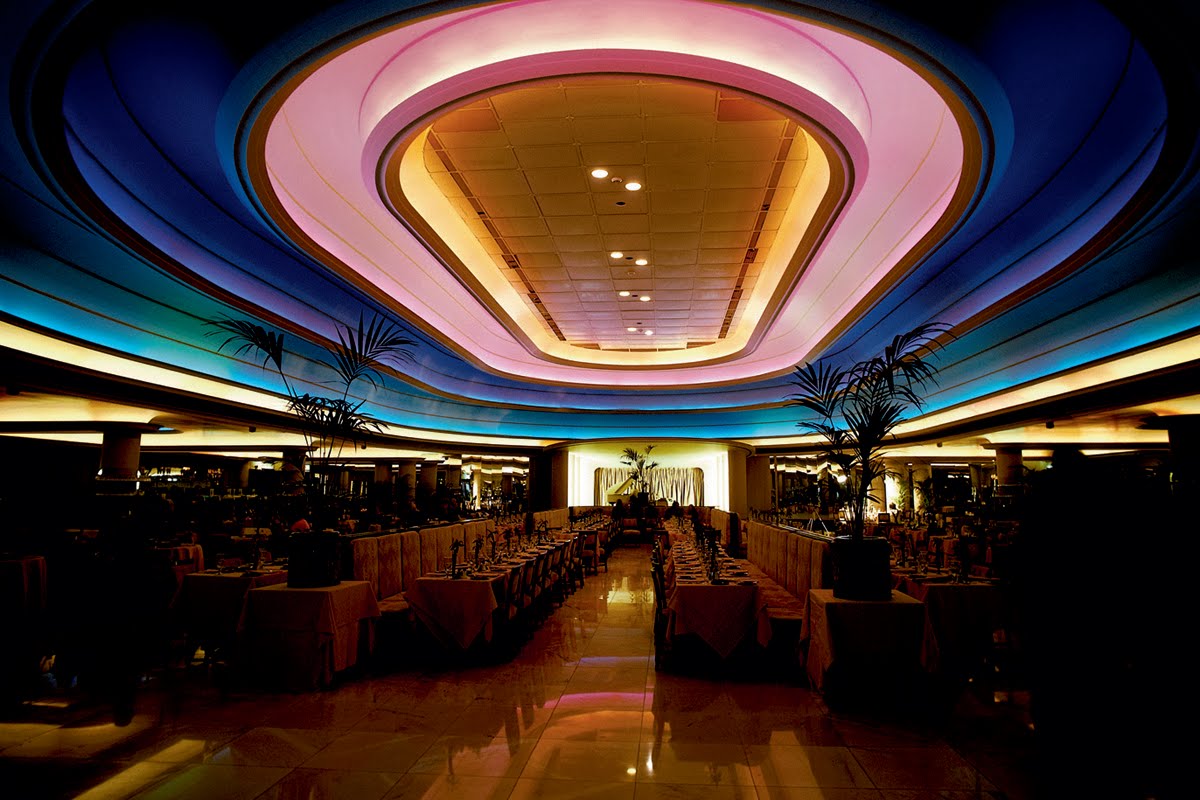 The Rainbow room of the fifth floor was used as a restaurant but it was intended as the showpiece of the store, infact it became a venue for concerts. Famous was the performance of The New York Dolls in1973 and this sealed the Biba’s reputation as “the glam party centre”.
The Rainbow room of the fifth floor was used as a restaurant but it was intended as the showpiece of the store, infact it became a venue for concerts. Famous was the performance of The New York Dolls in1973 and this sealed the Biba’s reputation as “the glam party centre”.
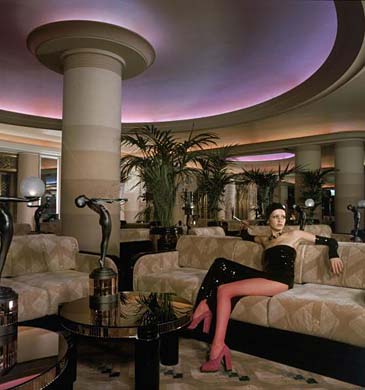 Twiggy in the Rainbow room
Twiggy in the Rainbow room
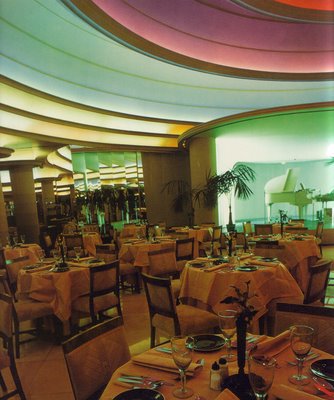
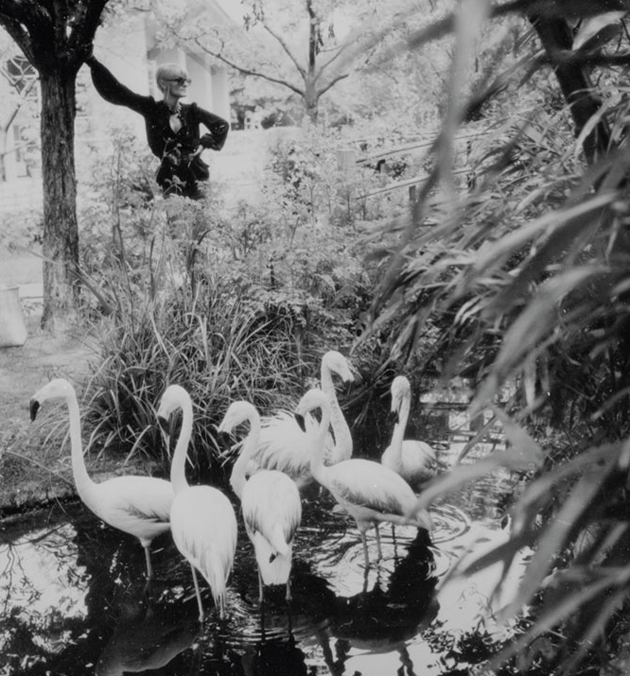
Barbara Hulanicki with pink flamingos in the Roof Garden
On the sixth floor there was the Roof Garden that was one-and-an-half acres of gardens that became a menagerie of birds: ducks, doves, flamingos, and even penguins (but failed to settle). The ex-tearoom turned as the Studio of Barbara and Fitz.
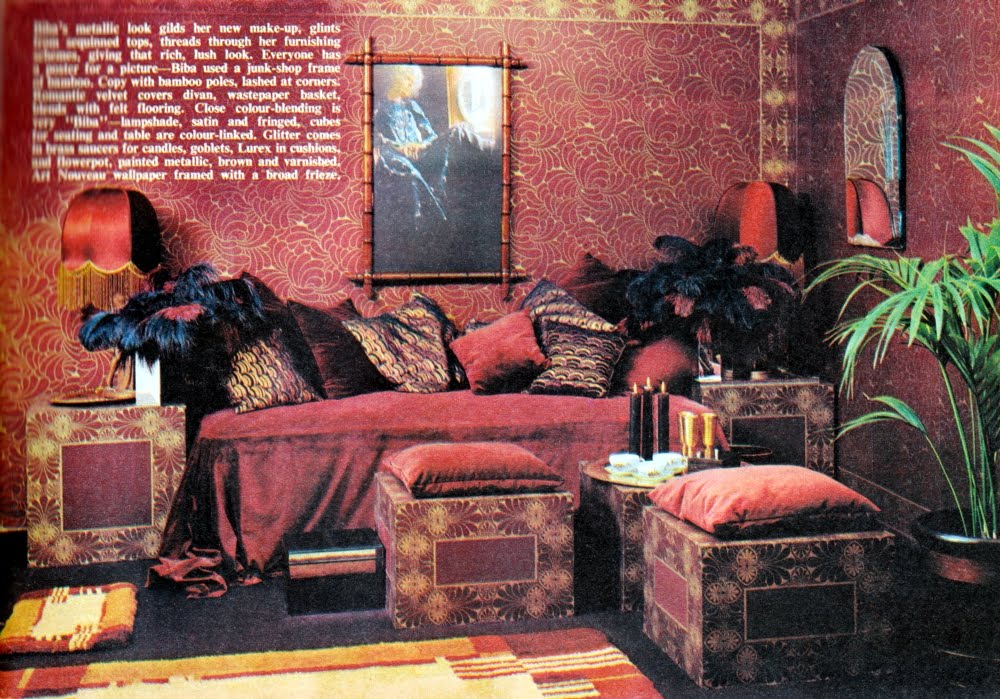
The Studio
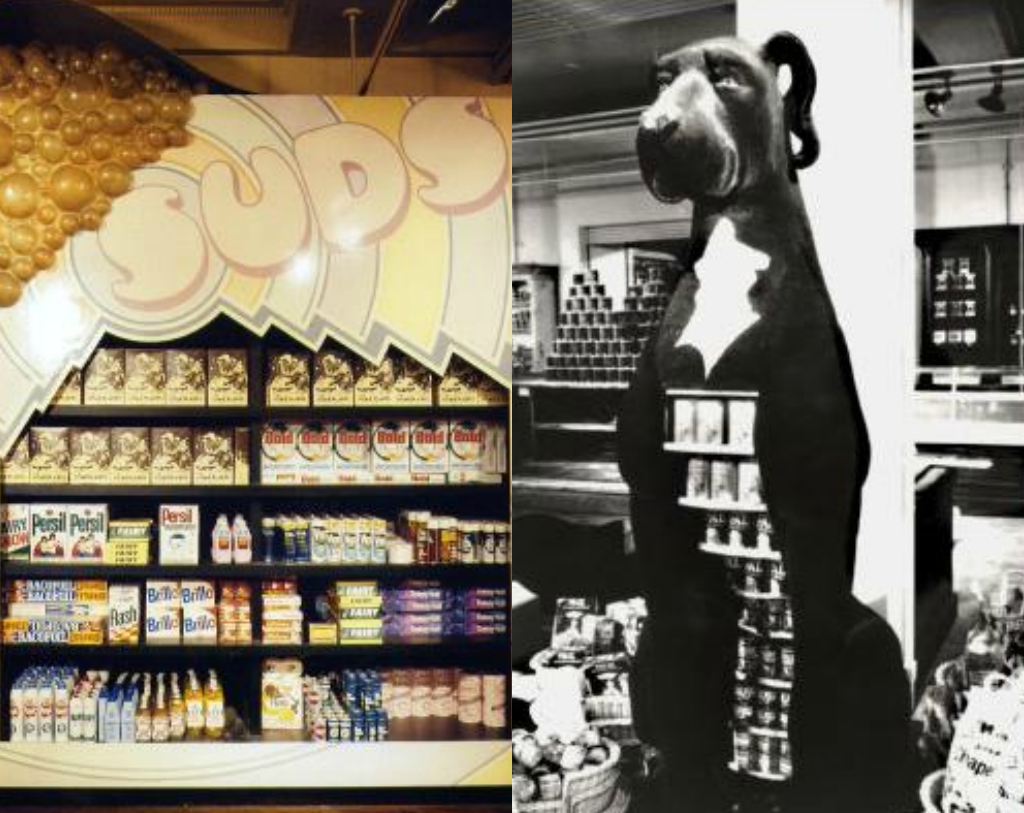
To complete the description I must say that the store had also a food department in the basement where there was no Decò nor Nouveau but units shaped like a giant baked bean tin labelled Warhol’s Condenses and there was also a dog-food unit based on Barbara’s dog Othello (so kitsch!).
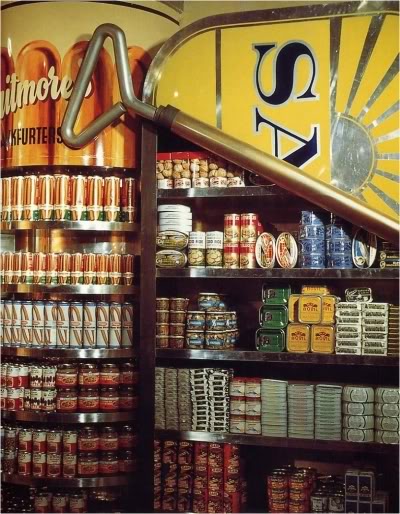
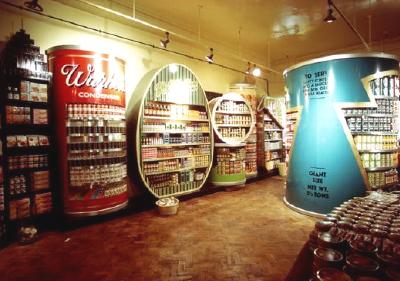
Barbara’s home:
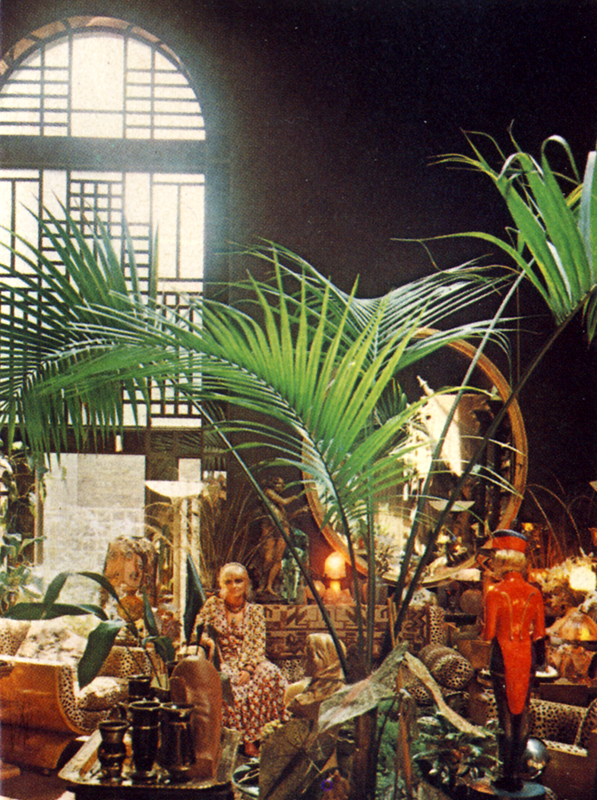
Barbara Hulanicki in the sitting-room, the window open to reveal a jungle of climbing plants outside. In the background, a collection of Art Deco glass below the enormous mirror, at least six feet in diameter. Everywhere lamps, small, fringed or mushroom-topped on long, slender stems: everywhere figures, ferns, flowers. In foreground, a set of black/silver/turquoise vases and modelled head on decorated brass tray and glass-sided table: replica of a twenties’ cigarette girl, now bearing a tray of jewellery.
Barbara Hulanicki at home in one cavernous studio which she found three years ago and filled with Art Deco from floor to ceiling. Walls, ceiling, stairs, all painted a rich matt brown, merge into the shadowy interior; angles and lines are softened and blurred. Colours, not walls, mark out living areas, a different shade for each section of space. Light is filtered through the brown-tinted glass of the high, patterned perpendicular window and a long fanlight in the roof. A brown spiral staircase, leafy with plastic twisting plants, leads to a long gallery which forms the dressing-rooms. Everywhere, an endlessly intricate arrangement of colour, pattern, space; a deep, dark brown jungle of the ornamental, the exotic, the glittering.
Photos by James Mortimer. Vogue, October 1975.
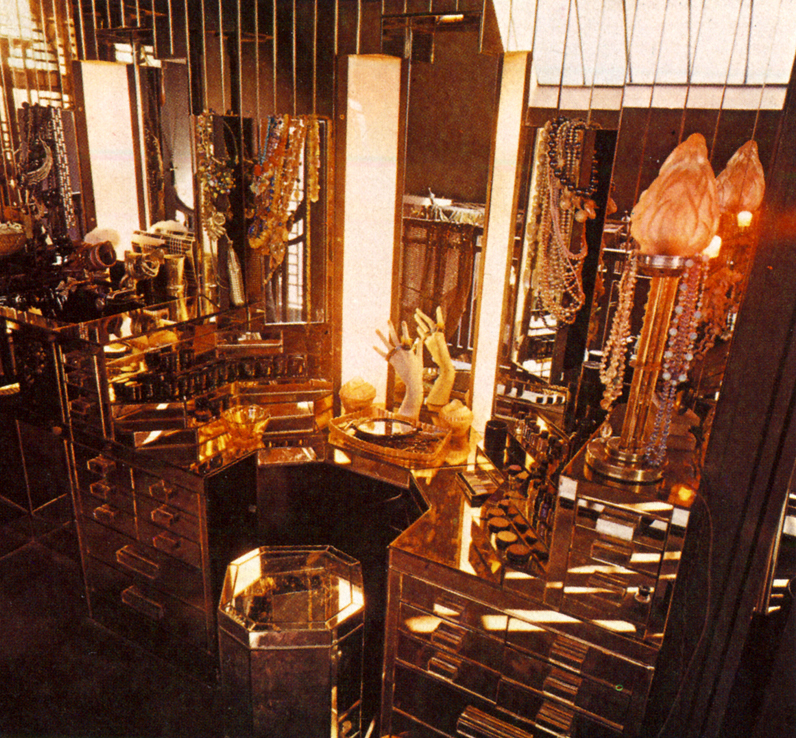
The dressing-room. Shades of peach and deepest brown, Creamy lighting from bulbs set behind opaque glass. Peach mirrors hung with beads, the dressing table, a darker shade of smoked peach, made up of tiny individual drawers. Stool topped with smoked peach glass.
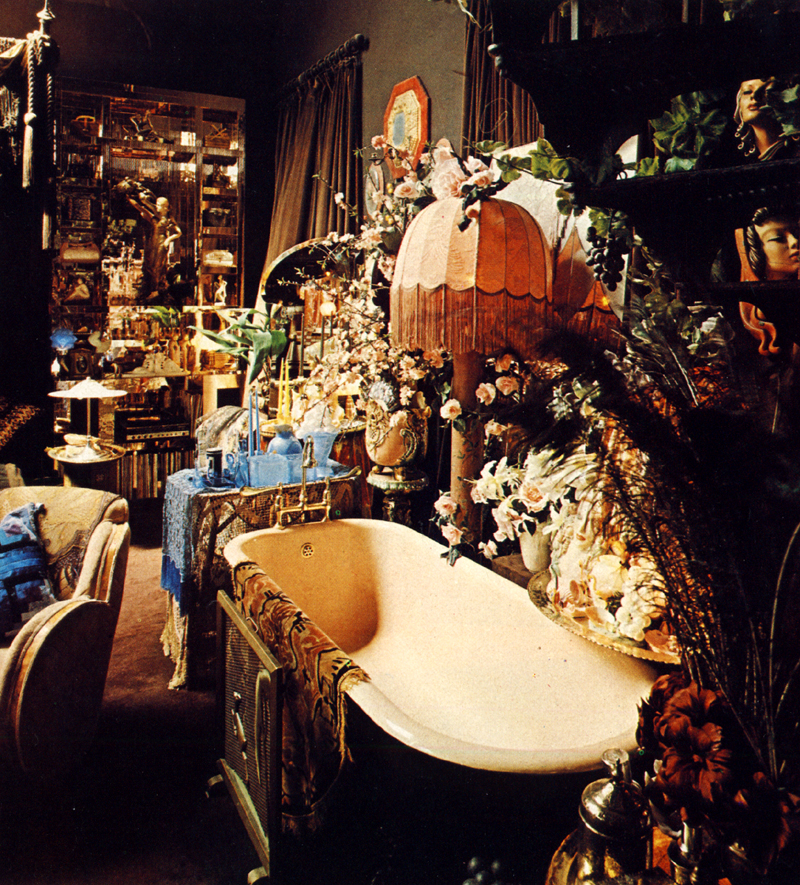
The bath, a riot of peach and plastic flowers. Ornate brass taps, Art Deco screen. Brilliant blue glass, candlesticks and pearly plastic grapes.

A section of the studio. Beneath the gallery one discovers a sink, kettle. cooker below a thirties’ Grecian frieze. Art Deco chairs in peach moquette. Screen, with beaded shawl. purple plastic grapes behind a delicate nasturtium-leaf lamp hung with beaded fringe
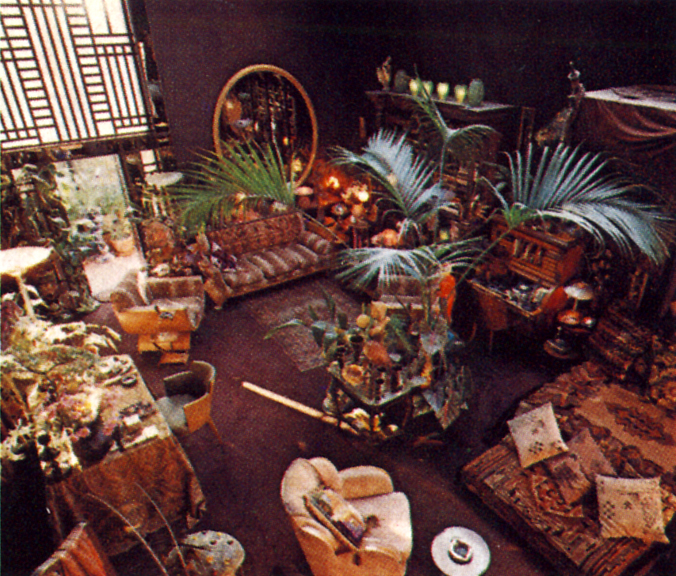
Looking down from the gallery into the studio, arranged into its separate “rooms”

The bed, above, hung with shawls, scattered with sequinned brocaded cushions. Barbara Hulanicki reflected in the bedside mirror on the writing desk and in the centre of the mirrored bed-head. On the right, a peach mirror flex set of shelves, with photographs, figures, eight Art Deco plastic handbags.
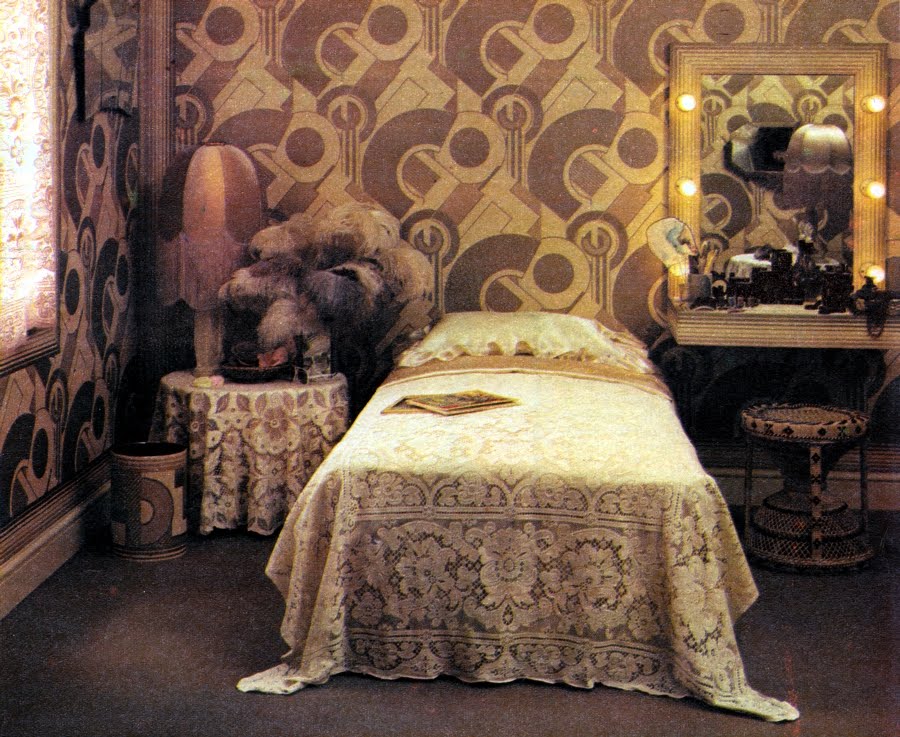
source: emmapeelpants.blogspot.com

